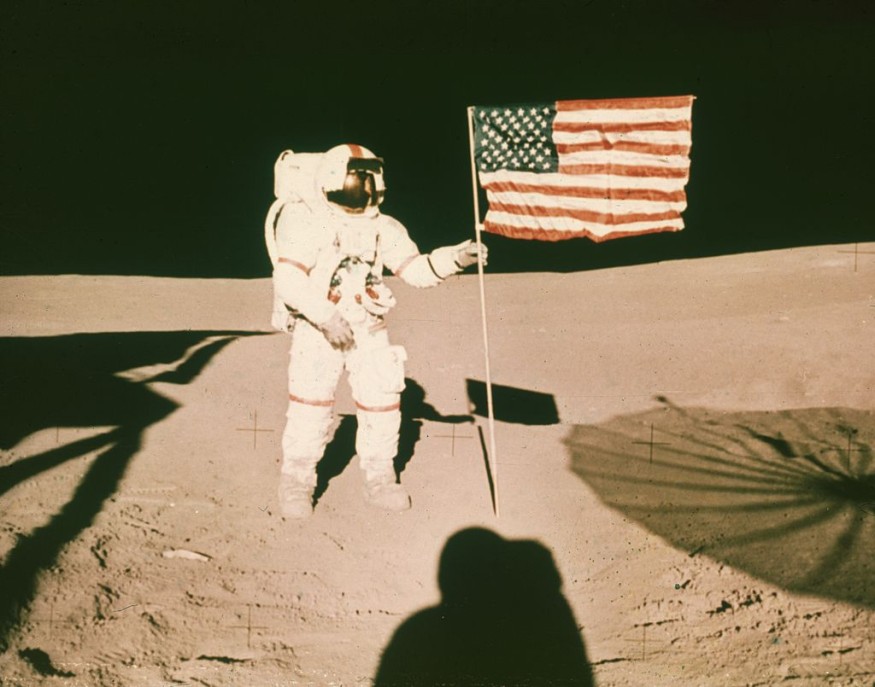Just as the UNESCO shields the pyramids of Egypt, the Great Wall of China, and Earth's other precious World Heritage sites, there is a need to protect a lot of historic rockets, landing sites, rovers, and memorabilia on the moon, experts in the field said.
As indicated in a report from The Mercury News, the dusty footprint of Astronaut Neil Armstrong on the moon bears witness to one of the greatest technological achievements of humanity. More so, it is completely unprotected under international law.
According to space archeologist Beth O'Leary from the New Mexico State University, that's gone once the footprint is blown away. O'Leary is among the growing chorus of experts who plead for formal protection of historic lunar artifacts and sites.
It has been 49 years since humans, the United States astronauts of Apollo 17, last walked on the moon. However, more countries and commercial companies race to tour the closest celestial neighbor of the Earth.

A Call from Experts
More than just footprints initially left on the moon in 1969. Six American flags are still flying on the moon, rigged with wire, and thus, they look like they are "waving" and like stainless steel commemorative plaques, each, roughly the size of a dinner plate.
In 2020, a China probe placed a flag made of material holding its bright red color at extreme temperatures. What's needed, the advocates said, is a more specific and binding international convention signed by all spacefaring countries.
Whereas the sought-after seal of UNESCO is not perfect, it was powerless to shield ancient sites across Iraq and Syria from the sledgehammer-wielding religious fanatics of ISIS; it's the best the Earth has.
Moon Littered with Stuff
This would set ground rolls as well for studies, O'Leary explained. Future archeologists might want to study the "toss zone" of Apollo 11, where astronauts discarded a TV camera, tools, tubes, and other items. However, they should not be allowed to bring shovels and begin to dig.
Question of, if everything deserves protection now arises. According to the advocates, criteria need to be developed to evaluate the worthiness of any site.
Michelle Hanlon, space lawyer of For All Moonkind said, there is a need for experts to say that the site, "we should leave pristine." More so, on that site, photographs can just be taken, and then move the artifacts.
A similar NewsTrendsNow report specified that the moon is littered with an approximated 400,000 pounds of stuff. Additionally, there are two golf balls hit by Alan Shepard of Apollo 14 in 1971.
Discarded Items
Astronaut David Scott left a Bible behind, on an abandoned buggy's dashboard during a second moon landing later that same year. The same report specified that there are bags of waste by humans.
However, some items are extremely sentimental. In 1972, Apollo 16 astronaut Charles Duke left a framed family picture. In a related report, USA News Site specified that sun exposure has plausibly bleached it white by now.
In November 1969, in the second lunar landing, Apollo 12 astronaut Alan Bean left an olive branch to commemorate Clifton Williams, that astronaut who was killed in a plane crash. In 1999, the Lunar Prospector, the space probe crash-landed on the moon, holds geologist Genene Shoemaker's cremated ashes.
The discarded rovers, dusty footprints, depleted rockets, and other fading objects, show precisely what humans can do when experts put their minds to it when they work together.
Related information about Neil Armstrong's footprints is shown on Unexplained Mysteries' YouTube video below:
RELATED ARTICLE : Blood Supermoon 2021: The Best Time, Sites to See This Rare Event
Check out more news and information on Moon in Science Times.










